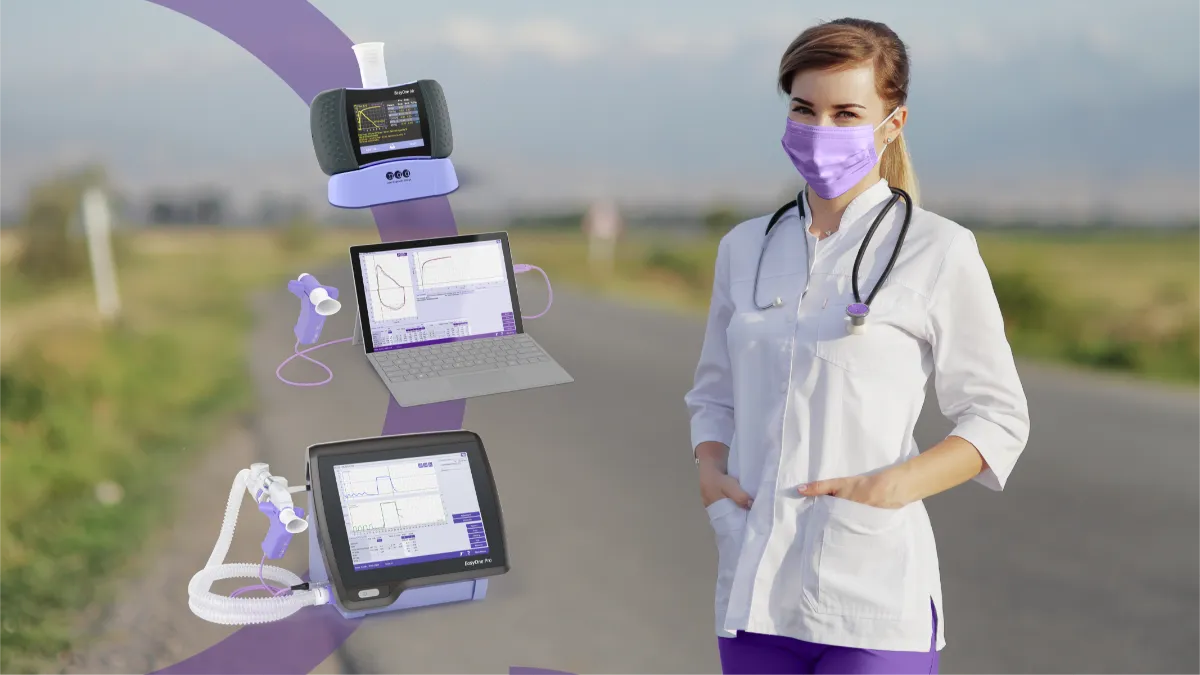ndd's TrueFlow Technology used to study lung health in penguins

Researchers at Fundación Oceanogràfic are using ndd TrueFlow Technology to study the lung function of Gentoo penguins.
The Fundación Oceanogràfic is a non-profit organization program aiming to improve scientific knowledge about ocean life. Little is known about how penguins avoid trauma while diving, and that’s where ndd’s TrueFlow Technology comes in.
To better understand this research, let’s dive into a penguin’s respiratory system for a closer look.
A bird’s eye view into a penguin’s respiratory system #
Although penguins are aquatic predators, they don’t have gills and cannot breathe underwater. Penguins are birds, and like birds, they have lungs and rely on oxygen.
But human lungs, set up like a bellows system, are much different from the lungs of penguins. When humans inhale, we breathe air into the nose, down the trachea, through the two bronchial tubes, into the lungs, and into tiny sacs called alveoli, where gas exchange occurs. During exhalation, air exits through the same pathway it entered.
Penguins, on the other hand, inhale and exhale much differently. Penguins inhale similarly to humans; they inhale air down the trachea, through the bronchial tubes, and into the lungs. But the gas exchange in penguins occurs in the parabronchi in the lungs, and then the air makes its way into air sacs, where it stays while diving.
The parabronchi have a hexagonal shape, and it’s unlikely that they compress during diving. The physiology of penguins is truly fascinating since diving should complicate matters.
But penguins are elite free-divers, exceeding depths of 50 meters, with the deepest dive recorded at 240 meters. Penguins have diving capabilities much more remarkable than humans.
Research at Oceanogràfic #
Little is known about penguins’ respiratory capacity and how they avoid trauma during diving. That’s why a research and veterinary team at Oceanogràfic began studying penguins’ lung function, led by Drs. Andreas Fahlman and Carlos Barros.
The Valencia scientists are using mobile ultrasound technology developed by ndd Medical Technologies to research penguins’ basic respiratory physiology and obtain information to help assess lung health in penguins with respiratory problems. The research is conducted only on penguins that are awake and participate voluntarily. The penguins can easily end the measurement at any time.
The caretakers’ strong relationship with the penguins, along with their dedication to training is what makes this research possible. Each trial is performed without restraining the penguin, and lung function is measured as the penguins participate voluntarily.
Gentoo penguins #
Gentoo penguins, native to sub-Antarctic islands, dive over 600 feet deep and swim about 22 miles per hour, faster than any other diving bird.
Currently, the research team is testing Gentoo penguins and hoping to expand testing to animals in the Antarctic.
The information obtained will help researchers better understand wild animals’ physiology and respiratory health in the wild.
The findings of this research can become a powerful tool for health assessments and conservation research.
Clinical statements come from these sources:
https://www.penguinsinternational.org/2019/09/03/how-do-penguins-breathe-aka-do-penguins-have-gills/
https://www.pinguins.info/Engels/Voortduiker_eng.html#penguins-breathe-aka-do-penguins-have-gills/
https://www.deeperblue.com/the-descent-of-penguin/
https://oceana.org/marine-life/gentoo-penguin/










